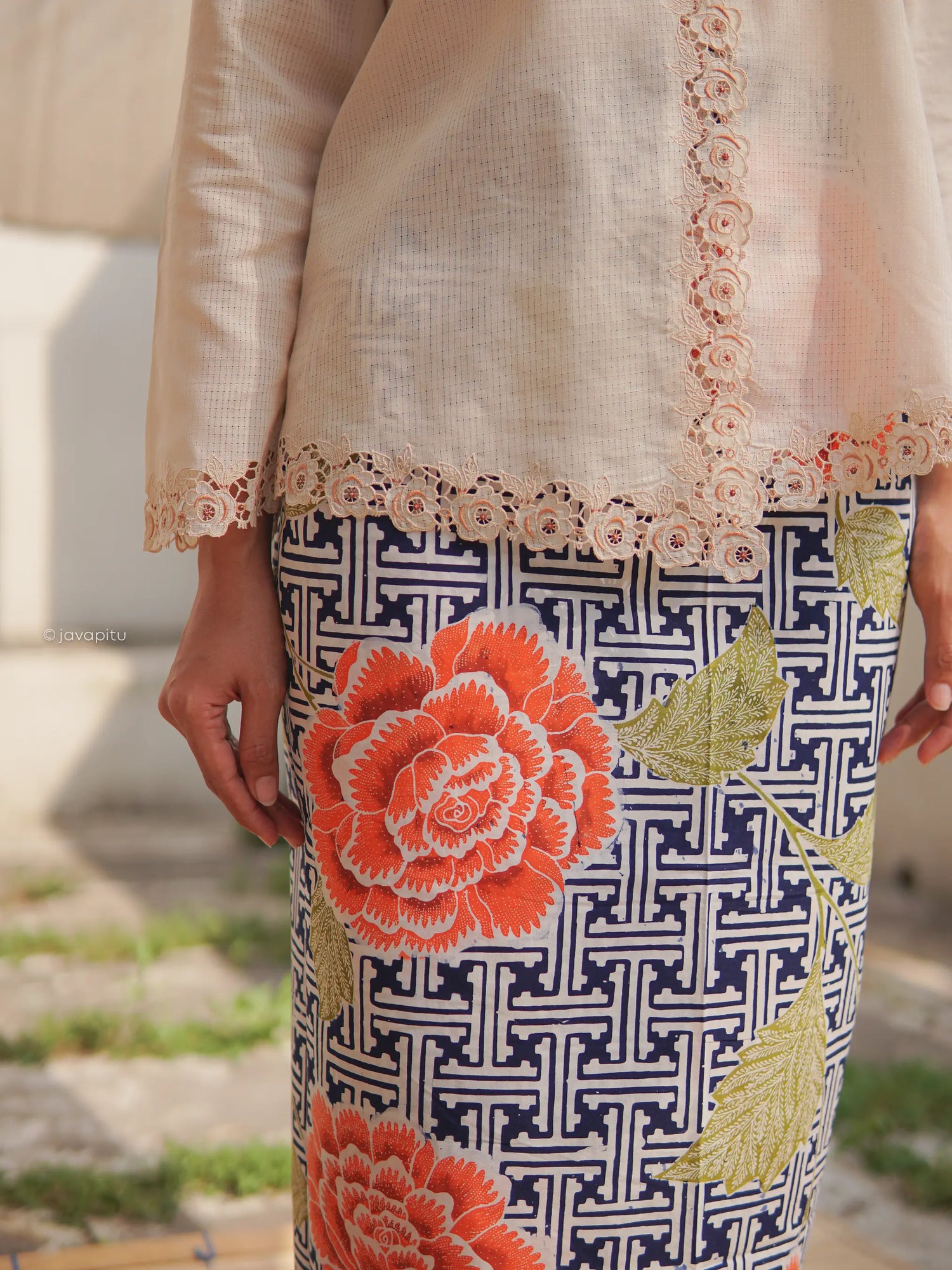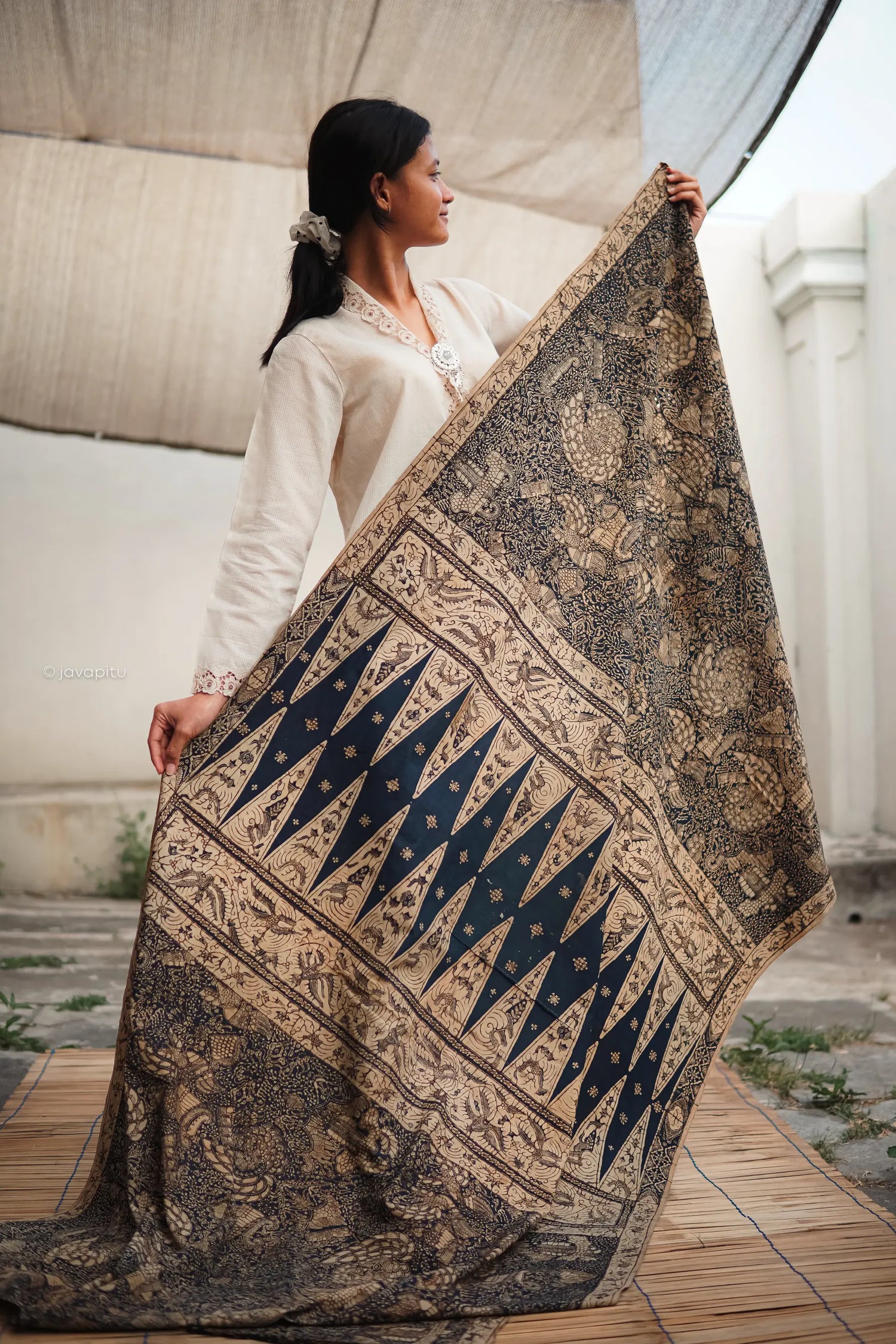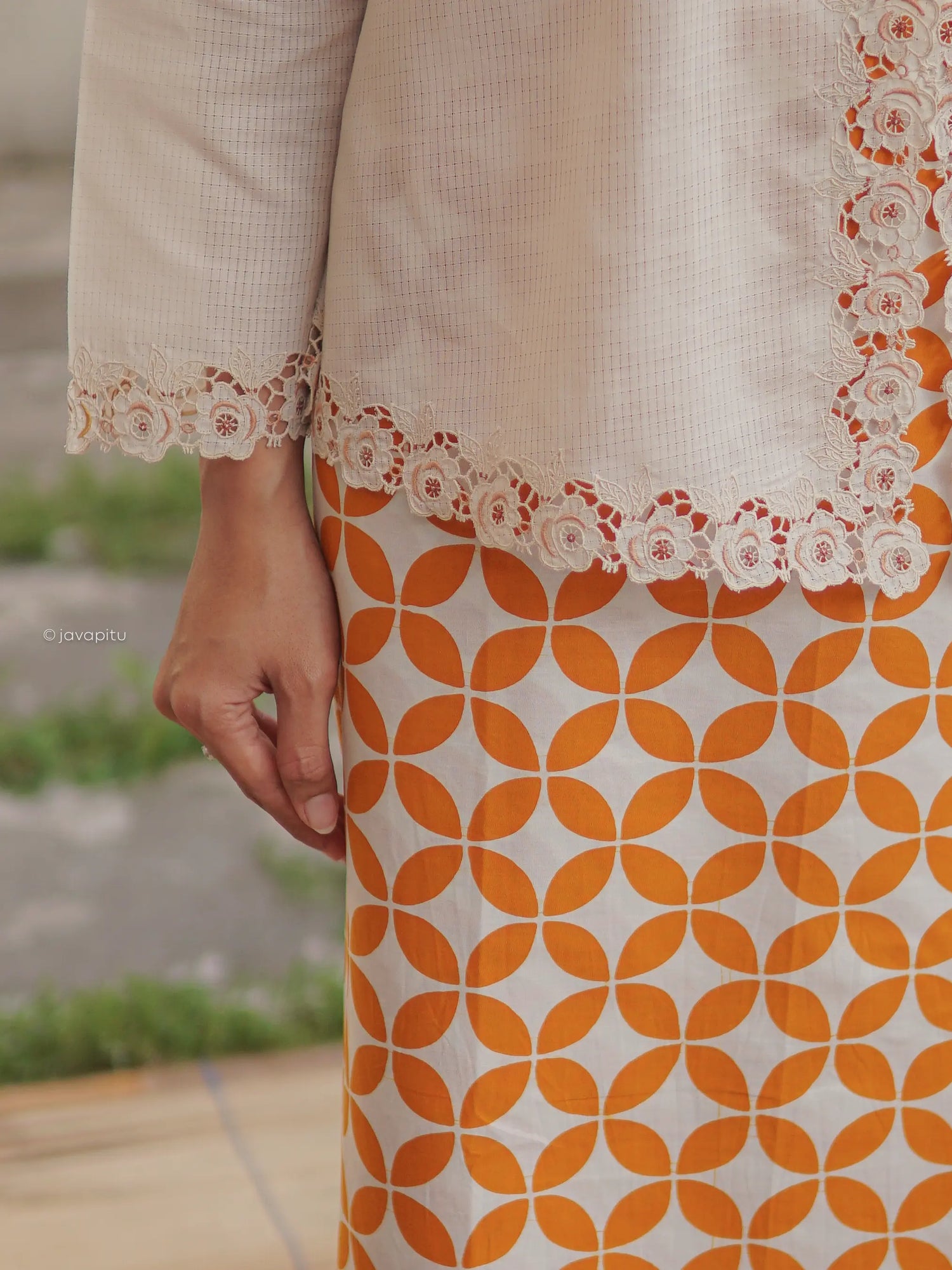-
Batik Cap " Parang Indigo " - Handmade batik - Javapitu
Regular price Rp 270,515.00 IDRRegular priceUnit price perRp 375,714.00 IDRSale price Rp 270,515.00 IDRSold out -
Batik Tulis " Banji Kotak " - Handmade batik
Regular price From Rp 283,000.00 IDRRegular priceUnit price perRp 404,285.00 IDRSale price From Rp 283,000.00 IDRSold out -
Batik Tulis dan Cap " Couple of Gelatik " - Handmade batik
Regular price Rp 303,000.00 IDRRegular priceUnit price perRp 420,833.00 IDRSale price Rp 303,000.00 IDRSold out -
Batik Tulis Burung Hong buketan mawar - Handmade batik -Javapitu
Regular price From Rp 270,000.00 IDRRegular priceUnit price perRp 375,000.00 IDRSale price From Rp 270,000.00 IDRSold out -
Batik Cap - Dancing peacock on the moon Blue - Javapitu
Regular price Rp 305,000.00 IDRRegular priceUnit price perRp 355,714.00 IDRSale price Rp 305,000.00 IDRSold out -
Batik Tulis Bunga Mawar rantai latar Sekarjagad
Regular price From Rp 282,750.00 IDRRegular priceUnit price perRp 403,928.00 IDRSale price From Rp 282,750.00 IDRSale -
Batik Tulis kombinasi Ikan koi dan Lotus
Regular price From Rp 270,000.00 IDRRegular priceUnit price perRp 375,000.00 IDRSale price From Rp 270,000.00 IDRSale -
Batik Cap Tradisional handmade, Buketan bunga warna Hijau pupus
Regular price Rp 292,000.00 IDRRegular priceUnit price perRp 375,000.00 IDRSale price Rp 292,000.00 IDRSold out -
Batik Tulis Cap Tradisional premium, Motif Garuda Indonesia Kuning
Regular price Rp 285,429.00 IDRRegular priceUnit price perRp 396,428.00 IDRSale price Rp 285,429.00 IDRSold out -
Batik Tulis Cap Tradisional halus, Motif Banji naga, Burung Hong
Regular price Rp 309,000.00 IDRRegular priceUnit price perRp 375,000.00 IDRSale price Rp 309,000.00 IDRSold out -
Batik Tulis Cap Tradisional halusan,Bunga anggrek biru muda - Javapitu
Regular price Rp 270,000.00 IDRRegular priceUnit price perRp 375,000.00 IDRSale price Rp 270,000.00 IDRSold out -
Batik Tulis Cap Tradisional premium- Bunga rambat
Regular price Rp 302,000.00 IDRRegular priceUnit price perRp 375,000.00 IDRSale price Rp 302,000.00 IDRSold out -
Batik Tulis Cap Tradisional - Hokokai Jlamprang Biru - Javapitu
Regular price Rp 338,000.00 IDRSale price Rp 338,000.00 IDRUnit price perSold out -
Batik Tulis Cap Tradisional - Hokokai tabur Kupu warna tosca
Regular price Rp 318,000.00 IDRRegular priceUnit price perRp 406,250.00 IDRSale price Rp 318,000.00 IDRSold out -
Batik Cap Tulis, Bintang semanggi 2, Bahan Adem, Biru Indigo Tua
Regular price Rp 298,001.00 IDRRegular priceUnit price perRp 413,889.00 IDRSale price Rp 298,001.00 IDRSold out -
Batik Cap Tulis Tradisional " Semanggi bintang " Biru indigo tua
Regular price Rp 298,001.00 IDRRegular priceUnit price perRp 413,889.00 IDRSale price Rp 298,001.00 IDRSold out -
Sarung Batik Tulis cap, Ceplok semanggi
Regular price Rp 202,500.00 IDRRegular priceUnit price perRp 281,250.00 IDRSale price Rp 202,500.00 IDRSold out -
Sarung Batik bukan Iwan Tirta, CapTulis warna Biru Indigo Tua
Regular price Rp 202,500.00 IDRRegular priceUnit price perRp 281,250.00 IDRSale price Rp 202,500.00 IDRSold out -
Sarung Batik Cap Tradisional model lawasan Bunga mawar cantik
Regular price Rp 338,000.00 IDRRegular priceUnit price perRp 482,857.00 IDRSale price Rp 338,000.00 IDRSold out -
Batik Tulis cap Pekalongan, Bangau latar Gribigan - Tradisional
Regular price Rp 292,500.00 IDRRegular priceUnit price perRp 406,250.00 IDRSale price Rp 292,500.00 IDRSold out
Collection
-

Batik Tulis
Batik Tulis is a traditional art form where the creation of patterns...
-

Collector Batik
A batik collector is an individual who embodies a deep appreciation for...























